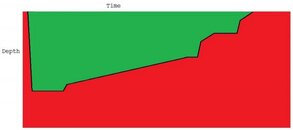You are using an out of date browser. It may not display this or other websites correctly.
You should upgrade or use an alternative browser.
You should upgrade or use an alternative browser.
Sharing a Dive Computer
- Thread starter Deviance
- Start date
Please register or login
Welcome to ScubaBoard, the world's largest scuba diving community. Registration is not required to read the forums, but we encourage you to join. Joining has its benefits and enables you to participate in the discussions.
Benefits of registering include
- Ability to post and comment on topics and discussions.
- A Free photo gallery to share your dive photos with the world.
- You can make this box go away
K
KeithG
Guest
Hang on. This thread is about sharing a computer. Not splitting. We all know computers are not ice cream cones.Sharing a computer is unreasonably much trouble and risky: there is just too great a risk of dropping it, maybe breaking or losing it as you pass it back and forth.
If you try sharing by each keeping just half the computer, each diver has to mentally double all readings he sees on the comper half to get the actual, normal value - geez what a hassle! There is also the pblm that spliting the computer can cause water to get inside the casing, and this leaves you with halves that are nicely clean, shiny, and pretty, but plagued by all sorts of performance issues.
scagrotto
Contributor
So you would agree that one computer between two divers is OK if you do it safely/conservatively?
I wouldn't make a habit of it (as others point out there's no need to not have your own under most circumstances), but I'd be comfortable doing it on a short term basis. "Safely" is, of course, a relative term. You can make correct or incorrect decisions while using your own computer and you can make correct (standard agency dogma aside) or incorrect decisions while relying on a computer that's on somebody else's wrist.
Since a picture is worth 1000 words, here's one as an example.

A computer and a diver buddy up for a dive, and as with all buddy pairs, their profiles aren't exactly identical. The computer dives the profile indicated by the black line. If the diver remains in the green zone 100% of the time their profile is more conservative than the computer's. If the diver strays into the red zone at all then their profile may or may not me more conservative. There are ways to know, but that particular computer isn't one of them. Being physically attached to the computer is the most practical (and perhaps reliable) way to be sure that the diver's profile is entirely in the green zone, but does anyone think it's the only way?
Whatever method a diver uses to determine their NDL (or deco requirements, as the case may be), the point is to calculate a safe profile and remain on the conservative side of that profile. I'll suggest that every diver that calculates a profile with deco software, prints it, and goes diving isn't diving with their own dive computer because their computer is on a desk at a home. If a PADI instructor helps their student plan a dive with tables and leaves the tables on the surface they're not diving with their "computer". If you're using a PDC it's really no different, and your exact spatial relationship to the computer isn't important. What's important is having a way to determine where you are relative to the calculated profile. I think that staying 5' above a buddy with a computer can be just as reliable a method of doing that as using a watch and a depth gauge or a bottom timer.
Whatever method a diver uses to determine their NDL (or deco requirements, as the case may be), the point is to calculate a safe profile and remain on the conservative side of that profile. I'll suggest that every diver that calculates a profile with deco software, prints it, and goes diving isn't diving with their own dive computer because their computer is on a desk at a home.
For deco dives, anyone that uses deco software to plan dives takes the plan with them. They may write it down on waterproof paper, they may memorize it, or they may take mathematical formulas with them on their dive to calculate deco on the fly.
If a PADI instructor helps their student plan a dive with tables and leaves the tables on the surface they're not diving with their "computer".
Why would you take the tables with you? Just remember the max depth, max time, ascent rate and whether or not a safety stop is required.
If you're using a PDC it's really no different, and your exact spatial relationship to the computer isn't important. What's important is having a way to determine where you are relative to the calculated profile. I think that staying 5' above a buddy with a computer can be just as reliable a method of doing that as using a watch and a depth gauge or a bottom timer.
While I agree that it is not high risk and unlikely to be a problem, one of the benefits of diving with someone else is that you have two brains. If one diver loses track of time and goes over time limit or depth limit, the other diver is there to get them back on track. This breaks down though if only one diver has instruments.
Similar threads
- Replies
- 85
- Views
- 4,174
- Replies
- 4
- Views
- 301




